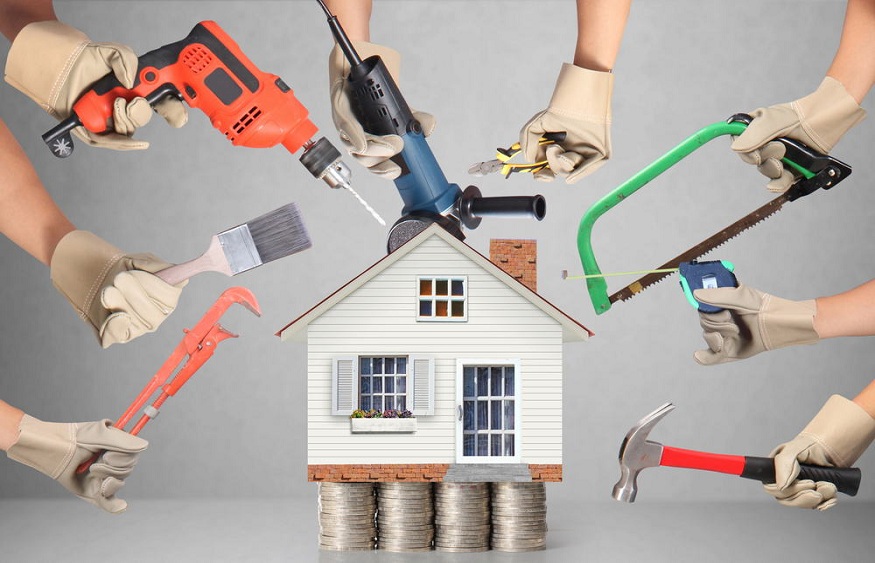From leaky faucets to sticking doors, home repair projects very often seem daunting for those DIY novices among us. Nevertheless, many common fixes are manageable with basic tools, research, a little patience, and tutorials for diagnosing and resolving frequent household issues before they worsen. If you gain confidence to tackle repairs yourself, you can then avoid expensive professional fees.
Creaky Wood Floor Repair
Hardwood floors naturally expand and contract. Gaps between boards enlarge over time, which cause unstable surfaces that creak with every step. You can restore stability by inspecting underneath for loose nails, excessive gaps, or weakened joints between the floorboards and subfloor.
The good folks behind SPAX screws tell us that you can eliminate creaks by adding extra support beams every few feet, re-securing any loose subfloor or floor joists to the beams using pan head screws pre-drilled to avoid splitting the wood. Reattach old floorboards tighter to joists using longer screws combined with construction adhesive. You can minimize gaps by forcing wood glue into cracks, then tapping planks down with a rubber mallet until they are tight. Place felt pads under movable furniture legs to prevent scratches and reduce surface friction that amplifies creaks. At the end of the day, properly secured floors prevent the subtle shifting that worsens creaks over time.
Sticking Drawer Repair
Try not to force sticky, jamming drawers that refuse to close smoothly. Binding issues progressively deteriorate if not addressed. Misaligned tracks are often the root cause, with shifted cabinet fronts or crooked drawers preventing smooth travel. Carefully inspect the tracks on both sides to verify proper alignment. Realign skewed sections and secure tightly to the cabinet with flathead screws into studs.
Lubricate gritty track channels using a paraffin wax rubbed directly into free stuck mechanisms. Clean the tracks thoroughly before applying lubricant, though. For quick DIY repairs, add self-adhesive felt pads to drawer edges as buffering friction reducers. Properly realigned tracks and lubrication restore years of seamless sliding function.
Leaky Faucet Fixes
The steady drip of leaky faucets wastes gallons of water and ruins sink surroundings if ignored. Confirm the faucet is fully shut off. Persistent leaks indicate that worn internal gaskets and O-rings need to be replaced. Turn off hot and cold supply valves before disassembling the faucet to access internal components.
Clearing Clogged Drains
Slow draining water, foul odors, and backed up sinks point to obstructions lurking in pipes wreaking plumbing havoc. Start by manually removing any accessible gunk with gloved hands or needlenose pliers. Use a bent wire coat hanger to hook and fish out trapped debris. Avoid harsh chemical drain cleaners when possible.
For organic clogs, try an eco-friendly enzymatic drain clearer to break up and dissolve blockages naturally before resorting to corrosive cleaners. For severe backups, disassemble pipes beneath sinks to fully clear obstructions. Prevent future clogs by installing hair catchers and fine screening at critical points.
Adjusting Sagging Doors
Doors that drag, stick or don’t latch properly due to loosening hinges over time are easily remedied. For minor alignment issues, insert cardboard shims between each hinge and the door jamb to adjust position and achieve full closure. Verify all hinge screws are tightened securely.
For substantial sagging, strategic additional screws installed into the door’s upper hinge plate provides lifting support to realign the door properly. Drill pilot holes to avoid splitting wood. A few properly placed inexpensive screws returns sagging doors to smooth functioning. Maintaining home mechanics prevents minor issues from escalating into costly repairs.
Conclusion
Arming yourself with information empowers you to resolve common household repairs without professional help. Tackle issues promptly before small problems evolve into expensive disasters. Learn fundamental techniques like tightening fasteners, lubricating parts and replacing worn components. Hands-on fixes not only improve home function but build confidence and skills to handle your next project.

